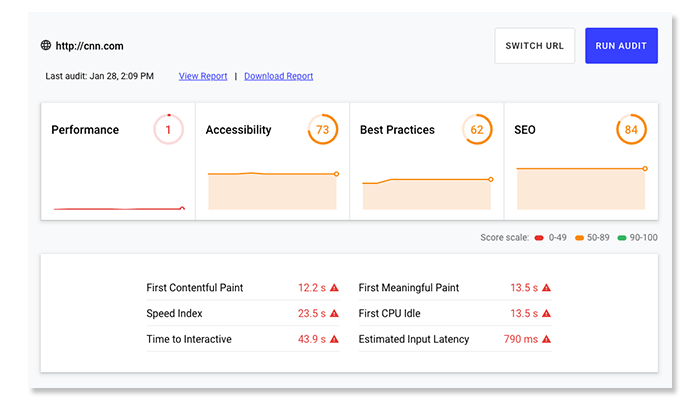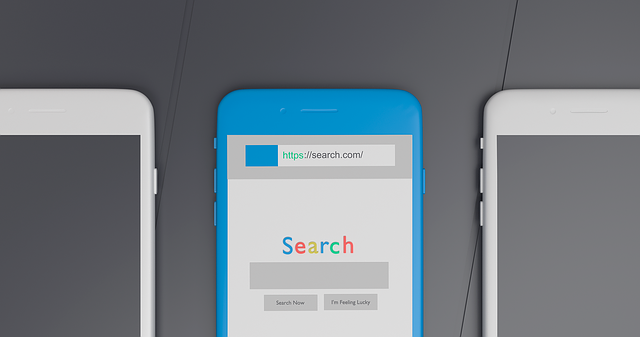B2B marketing is a very complex thing. Whether you’re starting a business, launching a product, building an internal team or hiring an agency, the variables can make your head spin.

Don’t panic. You’ve got this.
For all its complexity, B2B marketing in 2020 isn’t that complicated.
Marketing technology has eliminated most wasteful, manual processes. Search engine algorithms have evolved to favor good content over “SEO” junk. Video is easier than ever to produce.
The upshot?
You can can actually talk and act like a human being now. The limits are gone. Deliver an engaging message and a great user experience and leads will follow. Be creative, be real, be honest.
QED. Blog post over.
…
OK, fine.
There’s a little more to it than that. Getting to that fantastic message and slick user experience definitely requires some work and IP.
That’s why we’re here!
Let’s have a look at our experts’ top 17 B2B marketing tips for 2020. Implement these and you’ll be on your way to your best year ever.

17 B2B Marketing Tips for 2020
Tip #1: Find Your Lane
If you try to be everything, you won’t be anything.
For marketing success in 2020, you need to clearly define:
- The market you’re in
- What you’re great at
- The message you’re trying to get across
It’s absolutely essential to know who you are and who you want to be, then get after it.
Don’t try to sell into every industry. Find your killer feature. Specialize. Know thyself and don’t deviate.
Tip #2: Define Your Target Buyer
Who – personally – are you selling to?
The wrong answer is “the C-suite.” There are only so many high-end executives out there. And they’re probably not taking your calls..
Who is really doing the research for products or services like yours? Turn those people into your allies. The can open doors you’d never bust down yourself.
When you’re thinking about your buyers in 2020, be realistic. Remember the power of the influencer, the gatekeeper and the internal champion. Make them part of your team.

Tip #3: Invest Smartly in MarTech
It’s pretty common to find clients who’ve spent years buying all the marketing technology they possibly could. We’re talking ZoomInfo, HubSpot, Salesforce, the whole shebang.
They’d have big bills.
(And they couldn’t lie.)
Thing is, most companies don’t need a MarTech stack like that anymore.
We’re in a world where Mailchimp – starting at $15/month – can do basically what Pardot does. And sub-$1,000 marketing automation platforms are common … and good.
Our B2B marketing tip here: Think about what you actually need, and what your staff can support. Use your head before you spend thousands on sound-good features that will never see the light of day.
Remember, all of these software companies have great sales pitches because it’s their job to make themselves seem amazing. But we’re in a democratized tech world. Chances are, you can get the job done for a lot less.
Tip #4: Build a ‘Self-Service’ Website
Your website should not be trying to evoke deep-rooted feelings or be provocative or take the reader on an emotional journey that reminds them of fishing with their father when they were 7.
Your website visitors don’t want to go on a journey.
They want something, and then they want to leave.
And you have to respect that.
Whether it be information, answers, or a demo, let the prospect come in, find what they want, and leave.
You have a product, service or answer. They need a product, service or answer.
Website sessions are increasingly transactional. Overthink it and you’ll lose their attention – and leads.

5) Don’t ‘Do SEO’
What are you doing when you “do SEO?”
You’re trying to trick Google, that’s what!
Bad idea.
Google has 100 billion reasons not to let itself be tricked.
Google made $116 billion from ads in 2018.
A lot of that came from search ads. Where they can charge a premium because they have so many users.
They have so many users because they deliver the best search results on the web.
Thus, Google’s entire existence revolves around giving users the best possible answer to their question.
If all you’re doing is chasing the algorithm and “doing SEO,” you’re not actually creating the best result. And Google has a good reason not to rank you sustainably. The next Panda, Penguin or Pallas Cat could wipe you out.
Our B2B marketing tip for being “algorithm-proof” is … to create better content. The algorithm will only whack good content if and when it decides it wants to start showing crap results.
(And there are 100 billion reasons that won’t happen.)

Tip #6: Focus on Website Performance
Hop over to web.dev and test your website.
Go ahead. We’ll wait.
There’s a lot in these Lighthouse reports. But the first – and most critical – metric is Performance.
It couldn’t matter more.
Google wants to deliver the best results, remember? Part of that is a site’s performance. Meaning speed.
Get this to at least the 50s and ideally past 70. Your devs might not love you for it, but a low performance score is SERP death.

Tip #7: Emphasize Your Mobile Website
Most B2B websites have 5-15% mobile traffic. Pretty low.
But if you think it’s OK to not care about your site on mobile, you’re wrong.
Guess what? Google basically only sees the mobile version. (Check that Lighthouse report from Tip #6. The bottom lists the device it used. Probably an emulated Nexus 5X. A smartphone.)
Mobile-first indexing is a thing, and it’s not going away.
If your mobile experience sucks, Google will notice. And Google won’t like that.
Not one bit.
Remember, the best result wins. And the best result is on a fast site.
No matter how good your desktop site is, you’ll get dinged if your mobile experience is crappy. You need it to be awesome, even if humans aren’t using it.
Tip #8: B2B Social Media Is Changing
Have a look at just about any industry hashtag on Twitter.
What titillating content did you stumble upon?
Which of the #Brands are you most excited to engage with? Who’s activating you?
And how about those like and retweet numbers? Huge, right?
Yeah. No.
Old-school B2B social media is at an inflection point.
Marketers are still throwing a lot of money at it. For a select few, it’s working. For most, the results are diminishing.
There are cases where social media makes sense, and cases where it really doesn’t. When you’re working on your 2020 marketing strategy, you owe it to yourself to figure out which camp you’re in.
Sometimes there’s a reason for a robust social presence. Sometimes there isn’t. Either way, focus your investment on what works best for you.
Tip #9: Do Google Search Advertising Better
Google Ads is expensive. CPCs north of $50 are increasingly common. And monthly budgets in the three figures are increasingly rare.
Scary? Yeah. That’s why it’s so critical to do Google search ads right.
The problem with most Google Ads setups is a lack of specificity.
We’re talking campaigns with 10 ad groups, and ad groups with 200 keywords, a couple ads and a single landing page.
See the problem?
It’s all over the place. Advertisers like this are trying for “efficiency.” What they’re really doing is creating irrelevant clicks and low quality scores. That’s a recipe for wasted spend.
Here’s a B2B marketing tip you’ll either love or hate. We want you to spend a lot more time on Google Ads.
That is:
- Look at every single query your ads appear for, and be liberal with the “negative” button.
- Give up broad match except in the rarest of circumstances.
- Build ad groups with as few keywords as possible. Like, two or three.
- Create custom landing pages for as many ads and keywords as possible.
Basically, be hyper-targeted to the query. You’ll have a better quality score, users will be happier, and you’ll have to spend less on bids.

Tip #10: Make Your Website Accessible
The core tenet of B2B website design in 2020 is accessibility. In short, make things easy to read and engage with.
Web accessibility isn’t some afterthought you include to avoid an ADA lawsuit. Things like proper color contrast, text size and button definitions are actually design best practices.
There’s just too much noise now. Both audible and visual. Things need to be simple and obvious for users.
That means designs that aren’t attention-grabbing aren’t going to, well, grab attention.
Don’t assume users have more than a few seconds to give to you. Make it big. Make it obvious. And make it easy.
(The fact that accessibility compliance comes along with that is a nice bonus.)
Tip #11: Don’t Underestimate the Value of PR
B2B PR can’t ever be entirely replaced by technology.
Earned media and placements are basically a sales job. Feet on the street, hard work, failing, trying hard, and failing again.
When it works – when you build relationships with editors and get good PR hits – the value is exponential. It’s one of the most best things you can do as a B2B marketer.
Our B2B marketing tip here? Stay old-school with PR. Hard work pays off. You can’t jump in line.
Tip #12: HARO Is a HERO
Speaking of hard work for PR hits …
Responding to queries on HARO is great. It’s not easy, but it’s quickly and truly rewarding.
HARO responses will generate quotes and hits for you – as long as you’re up to speed with the times.
There used to be a school of thought that HARO queries weren’t worth responding to if they weren’t from a big pub. No longer.
Today’s most prolific HARO users are roundups and blogs. Figure a domain authority of 25 or 30. And that’s actually a good thing.
Give a roundup author something on-topic, articulate and specific, and there’s a very good chance you’ll be included. No, it’s not being a source in Forbes. But it’s backlink- and visibility-boosting wins, frequently.
You’ll be included!
And we want you to feel included. You deserve it.

Tip #13: Go Big or Go Home at Trade Shows
If you’re thinking of investing $30,000 to exhibit in a 10×10 booth, you should spend $50,000 on a 20×20.
Why?
If you just dip your toe in the trade show water, you’ll probably be disappointed. You’re being penny-wise and foolish.
Trade show visibility is logarithmic. Hardly anybody is going to see your 10×10. That’s $30,000 with little return.
A 20×20, however, is dramatically more visible. For $20,000 more, you’re way more than doubling your impact.
We see better results for our clients when they go big. So dip all of your toes in the water. Heck, just cannonball into the water. Make it look like a party. Whether you’re looking for leads, investors or an exit, you want that attention and interaction.
If you get a tiny corner booth, the only things you’ll be interacting with are dust bunnies.
Tip #14: Use Data. But Don’t Overuse It.
“Data” has been the watchword for B2B marketers over the last decade. As great as data is, there can be a point where it’s just silly.
If you’re making decisions based on samples under 10,000 anythings, you’re doing it wrong.
10,000 is the magic number.
When you have data based on 10,000 users, sessions or impressions, you can usually feel decently confident that it’s pointing somewhere.
Make business decisions based on smaller samples at your own risk.
And regardless of the size, there’s still a place for your gut. Even the most data-driven marketers need to call an audible once in a while.
Tip #15: Account-Based Marketing Matters
ABM is basically a fancy, jargony term for “sales.”
It’s going to be very effective for 2020, though.
If you’re targeting a person or company you want to talk to, make it easy for sales to talk to them. Whether you’re sending them stuff in the mail, emailing them or targeting them with advertising, you want them to have heard of you when sales hops on the phone.
The goal of ABM is to make your salesperson’s job a little easier. Done right, it does just that.
Just remember: If you don’t have a hungry sales team, ABM is pointless. It’s a target-softening tactic. If nobody goes after the target … you get the idea.
Tip #16: Be Honest
You’re trying to sell something, and someone may or may not want to buy it.
Everybody knows the game.
You know it. We know it.
So make 2020 the year of being up-front and honest. Crap content and thinly veiled sales pitches are pointless. Because everyone knows it’s crap and thinly veiled.
Don’t send those annoying automated emails pretending to be sad someone didn’t respond.
Don’t fake personalization.
People appreciate honesty. In a world that’s moving a bit too fast, you can be a breath of fresh air.
Here, let’s practice!
You should hire us as a marketing agency. We’re good at this. Call us – 610-421-8601 x122. Or fill out a form. We want you to give us money in exchange for services.
Didn’t that feel good?
Tip #17: Move Fast, Break Stuff.
Statistically, everything you do in B2B marketing will fail.
Every time you publish a blog post, expect that nobody will ever read it.
Each ad, assume a 0% CTR.
Every CTA, figure no conversions.
Wait! Hear us out!
B2B marketing is multi-faceted, multi-layered and endless. You’re going to have to try a lot of stuff before you stumble upon the thing that’s going to move the needle.
Here’s the light at the end of that depressing tunnel: You should try everything and never let failure get you down.
(It’s probably copyright infringement to use a Judy Hopps GIF here. So here’s a link.)
Don’t put all your eggs in one basket. Don’t get too precious about your “great idea.” One of the best B2B marketing tips you will ever hear is that when something doesn’t work, try something else. And when that doesn’t work, try something else.
One or two things will hit and carry you to success. But you don’t know what those one or two things are. So move fast and don’t be afraid to break some stuff.
B2B Marketing Tips for 2020
If you’ve made it this far, it means you’re more than ready to start zhuzhing (Author’s note: I’m told that’s a word) up your B2B marketing efforts this year.
We know that was a lot of content to digest, so here’s a short recap of our 17 best B2B marketing tips for 2020:
- Find your lane: Have a clearly articulated message, obvious market position, and a set of standards for the entire team.
- Define your target: Think realistically. It’s not always about selling to the C-suite.
- Invest smartly in MarTech: No need to spend thousands if you don’t need it.
- Build a ‘self-service’ website: Give your prospects what they want, not what you want to give them.
- Don’t ‘Do SEO’: Why try to trick Google when you could just create the best content in the world?
- Focus on website Performance: Hop on to web.dev and make sure your website’s Performance score is solid.
- Don’t forget about mobile: It’s the only version Google sees.
- Think before you invest in social media: Only do it if it makes sense in your case. Not because “you might as well should.”
- Get Better at Google search advertising: Every query, every click and every user matters. Get granular.
- Accessibility isn’t just for WCAG: Make sure your content is big, obvious, and easy to digest.
- Don’t underestimate the value of PR: You’re wrong if you think you can just “technology” it away.
- HARO is a HERO: Respond to those queries. It’s a great way for you to get quick hits.
- Trade shows: GO BIG or GO HOME.
- Use data, but don’t overuse it: Don’t make decisions on tiny sample sizes “because data.”
- Account-based marketing matters: And as effective as it is, it’s pointless without a hungry sales team.
- Be honest: Nobody wants to read a sales pitch. We all know the score. (Also, hire us.)
- Move fast, break stuff: All of your B2B marketing efforts may fail. But that’s OK. Try, fail, and try again. And again. You’ll win in the end.




